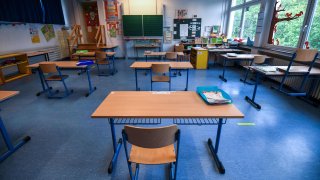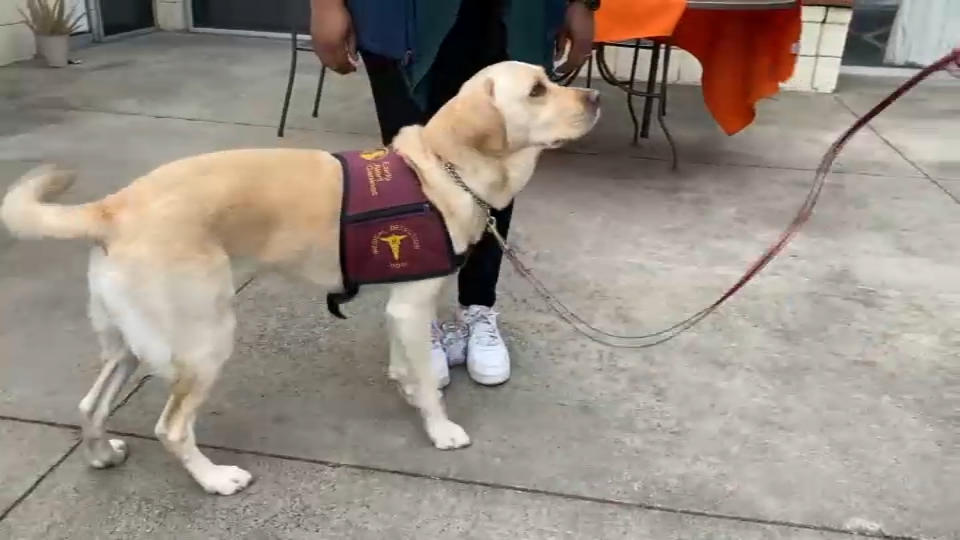
As politicians and business leaders talk about reopening the economy, one looming question goes unanswered: How can parents go back to work when it may not be safe for kids to go to school?
Most states have already closed public schools through the remainder of the academic year. Of those that haven’t, no state has set a date to reopen them.
Working parents have had to juggle child care and employment for more than a month because of coronavirus quarantines. Pushing out school and camp closures indefinitely is unsustainable, say labor and public health experts.
Reopening schools is arguably the most essential complication to overcome for economic recovery. Many parents simply can’t go back to work if their children are still home, no matter what government officials or business executives say about potential recovery timelines. Unless plans are thoughtful and nearly foolproof, parents won’t be comfortable putting their children — and themselves — at risk.
Routine testing required
Although kids appear to have minimal risk of dying or getting seriously ill from Covid-19, they can spread the disease like anyone else, said Ashish Jha, professor of health policy at the Harvard T.H. Chan School of Public Health.
Any proposal to reopen schools in September should be done hand in hand with aggressive testing of students and appropriate social distancing, such as eliminating assemblies and possibly fall sports, Jha said.
Coronavirus Pandemic
Full coverage of the COVID-19 outbreak and how it impacts you
“We need an entire plan around keeping schools open,” Jha said. “A little bit of federal leadership on this wouldn’t hurt.”
Opening schools by September is doable if the U.S. can manufacture “simple throat swab tests” and distribute them to schools across the nation, said Jha. Routine available testing will also ease psychological concerns among parents, said former Labor Secretary Robert Reich, who teaches public policy at the University of California, Berkeley. To get to that level will require “at least three times the amount of testing we’re doing now,” he said.
“If most people don’t feel like they can return to society, you can make up any day you want and say the economy is open, but people will be extremely nervous,” Reich said. “People don’t want sheltering in place lifted yet.”
The U.S. may decide to follow China’s lead, where schools for older students have slowly begun reopening with social distancing, small class sizes and other restrictions. These students have their temperatures checked at school gates and show a “green” symbol on a phone app to prove they are clear from infection risk, according to the French news agency Agence France-Presse.
The United Federation of Teachers union, which represents more than 140,000 teachers and other school employees inNew York City, has started an online petition addressed to the federal government demanding certain requirements are met before schools can reopen. They include:
- Widespread testing
- Temperature checks upon entering schools
- Rigorous cleaning protocols and protective gear
- A procedure for tracing people who have been in close physical contact with anyone who has tested positive for the virus
It’s possible older students will return to schools before younger students. That’s what China has done in recent days, with Shanghai allowing back students in their final years of middle and high school, according to the BBC. Older children can maintain social distancing and wear masks in class and could carry phones allowing for exposure identification. Sending children back in waves could also help by keeping the overall number of students down while routinely testing kids to ensure no one new is getting sick.
Monitoring the number of new cases over the summer will be crucial to making a decision for September. Reopening the economy too early means case numbers could still be high in July or August, which would doom schools from reopening in September, cautions Dr. Dhruv Khullar, a physician at NewYork-Presbyterian Hospital and an assistant professor at the Weill Cornell Department of Healthcare Policy and Research.
“I don’t think there’s any chance that people are going to feel comfortable sending their kids to school until the overall number of people getting infected is drastically lower than it is now,” Khullar said. “Getting there will take many more weeks if not months of social distancing and more aggressive testing.”
A math problem: Quarantining positive cases
It would be irresponsible to open schools without a parallel plan for remote learning from home, said Peter Bach, director of the Center for Health Policy and Outcomes.
One reason testing is so necessary is because up to 25% of infected people are asymptomatic, according Dr. Robert Redfield, director of the Centers for Disease Control and Prevention. Still, these people can spread the virus.
Kids who test positive — and everyone who has been in close contact with those students, including classmates, teachers and administrators — will have to leave to school to self-quarantine, Bach said. As a result, any school that reopens should put in a remote-learning curriculum so students can keep pace in the classroom and at home.
One study conducted in California’s Santa Clara County suggested that no more than 4% of the population had been infected with Covid-19 in early April. In other words, 96% of the county hadn’t been exposed to the virus as shelter-in-place mandates went into effect. (Critics say the study was flawed and the percentage of exposed people could be even lower.)
If large swaths of children are being sent home for weeks at a time, that also means parents may need to stay quarantined from their workplaces as well. The downstream effects could easily derail plans to get back to normal, Bach said.
“I don’t think people have done the math on this,” Bach said. “We’re going to have a lot of people testing positive, and that’s going to undercut our ability to go back to normal. And there are still not a lot of people walking around who have been exposed to this.”
A second shutdown?
Even if schools open in September, further outbreaks could force subsequent closures.
A coronavirus vaccine won’t be ready by mid-to-late 2021 at the earliest, said Jha. That means there’s a realistic possibility of a “second, third and fourth” wave of Covid-19 by then.
White House advisor Dr. Anthony Fauci alluded to this reality at a press conference last month.
“We will have coronavirus in the fall,” Fauci said. “I am convinced of that because of the degree of transmissibility that it has and the global nature.”
But Fauci added that “in the fall we will be much much better prepared to do the type of containment compared to what happened to us this winter.”
“I’m not Pollyannishabout this,” said Jha. “If we are super aggressive on testing, if we put into place moderate social distancing when possible, if we have a therapy that works for people who get very sick ... if we do all of that, I think we can keep schools open all year. It’s going to be very hard to pull off, but we are more than capable to pull it off.”
If schools shut down again, parents may be forced to return to work anyway.
“Seventy-eight percent of workers live paycheck to paycheck,” Reich said. “There’s no way people can do this for long on their own. They aren’t set up for it, frankly.”
That may set up a situation where parents call in retired grandparents, aunts and uncles to watch kids while they go back to work. Most Americans “can’t afford child care of any quality during the school year,” Reich said. That means more exposure for older people, who have the highest risk of serious illness from the virus.
This story first appeared on CNBC.com as part of a special digital series The Next Normal. More from CNBC:



